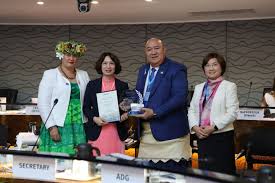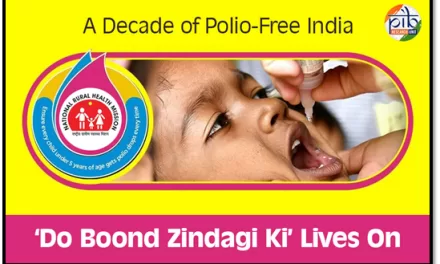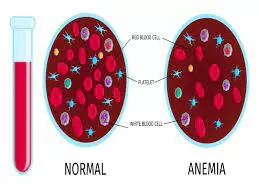In a significant health milestone, Viet Nam has successfully eliminated trachoma. This remarkable achievement was validated by the World Health Organization (WHO) and a plaque was presented to the Vice Minister of Health of Viet Nam, Associate Professor Nguyen Thi Lien Huong, during the seventy-fifth session of the WHO Regional Committee for the Western Pacific, which opened today in Manila.
Viet Nam eliminates trachoma as a public health problem

Read Time:4 Minute, 24 Second
Trachoma is the leading infectious cause of blindness globally. It is a preventable disease of the eye caused by Chlamydia trachomatis bacteria. Trachoma is spread by flies and people can also become infected through direct contact with discharge from the eyes or nose of an infected person. With repeated infections, the eyelashes may be drawn in so that they rub on the surface of the eye, causing pain and damaging the cornea. Some affected individuals must undergo surgery to prevent blindness from the disease.
Decades of concerted efforts
Over the past 70 years, Viet Nam has worked tirelessly to combat trachoma, treating hundreds of thousands of people and implementing rigorous control measures. These efforts were significantly strengthened with the implementation of WHO’s SAFE strategy, which stands for surgery, antibiotics, facial cleanliness and environmental improvement.
Past surveys indicated that trachoma was a public health problem in four provinces in Viet Nam. Thirty years ago, 1.7% of people living in these high-risk provinces required surgery to prevent blindness from trachoma. However, by 2023 the proportion of adults with the blinding form of the disease had fallen below 0.2%, which is the threshold required for WHO validation of elimination of trachoma as a public health problem. Continuous monitoring and the focused implementation of the SAFE strategy in the country, starting in 1999, have been instrumental in this decline.
Trachoma elimination in Viet Nam was made possible through collaboration among several government agencies including the Ministry of Health, the Ministry of Education and Training and the Ministry of Agriculture and Rural Development, with the support of WHO and international health partners including the Australian Department of Foreign Affairs and Trade (DFAT), the Fred Hollows Foundation, the International Trachoma Initiative (ITI), RTI International, UNICEF and the United States Agency for International Development (USAID). Viet Nam was one of the first group of countries to receive Pfizer-donated azithromycin for trachoma elimination purposes through ITI, a donation that has been critical to global progress against trachoma.
“Elimination of trachoma as a public health problem in Viet Nam is a monumental achievement for the country and for the global fight against the disease,” said Dr Tedros Adhanom Ghebreyesus, WHO Director-General. “This milestone is a testament to the unwavering dedication of Viet Nam’s health workers, including many working at community level. It underscores the power of collective action, innovative thinking and a shared commitment to a healthier future for all. I commend Viet Nam for its dedication and success in safeguarding the vision of millions.”
“The elimination of trachoma in Viet Nam demonstrates the commitment of the Government, health workers and communities across the country,” said Dr Saia Ma’u Piukala, WHO Regional Director for the Western Pacific, praising the achievement. “It is a shining example of how targeted interventions, strong partnerships and sustained effort can bring about real change in the health of populations.”
A trachoma-free future
WHO Representative to Viet Nam, Dr Angela Pratt, described trachoma as a disease of poverty. “Communities in remote areas without good access to safe water and sanitation were the worst affected. But Viet Nam has demonstrated that it is possible to reach the hardest-to-reach populations, make the right investments to protect people’s health and ensure a trachoma-free future.”
Reflecting on this historic achievement, Associate Professor Nguyen Thi Lien Huong said that the elimination of trachoma was a proud moment for Viet Nam. “The combined efforts of many agencies and communities, with the support of WHO and partner organizations, have saved thousands of people from lifelong blindness and economic disadvantage. Our children can now grow up safe from this painful and potentially blinding disease. This is a wonderful achievement for our people, which will pay dividends for decades to come. In this happy moment, on behalf of the Vietnamese people, I want to express our sincere thanks to all international partners who contributed great support to trachoma elimination in Viet Nam.”
In 2018, Viet Nam eliminated lymphatic filariasis. The country has also made tremendous progress on combating malaria, which is now only found in pockets of areas and is close to being eliminated.
Viet Nam’s success is part of broader progress in disease prevention in the WHO Western Pacific Region. Since the launch of WHO’s first road map for the prevention and control of neglected tropical diseases (NTDs) in 2012, the Region has made significant strides in eliminating trachoma. Between 2016 and 2022, four out of the Region’s 11 trachoma-endemic countries were validated for trachoma elimination. Viet Nam becomes the fifth, joining Cambodia, China, the Lao People’s Democratic Republic and Vanuatu in recording this achievement, highlighting the importance of sustained efforts in tackling NTDs.
WHO continues to support countries in the Region to eliminate trachoma and other NTDs as part of the global effort to improve health and well-being for all.










